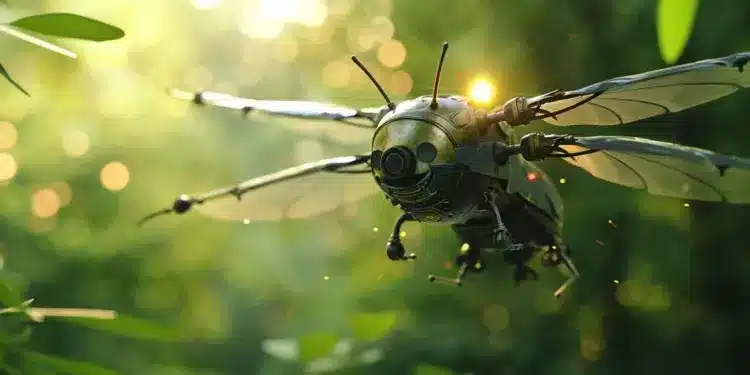Advancements in Robotic Insects for Pollination

The development of a new generation of robotic insects marks a significant leap in agricultural technology. Researchers have engineered these flying robots to outperform their predecessors in endurance, agility, and efficiency. This innovation aims to support artificial pollination on a larger scale, potentially enhancing agricultural yields while minimizing environmental impacts. By addressing the limitations of earlier models, these robotic insects are becoming more practical for real-world applications. The new designs focus on lightweight structures that can store sufficient power, making them viable for extended use in various agricultural settings.
Flight Capabilities Enhanced Through Structural Adjustments
Recent studies published in *Science Robotics* reveal that the latest robotic insects can fly up to 100 times longer than earlier versions. Previous models faced challenges with lift and stability due to their excessive wing numbers and inefficient motion patterns. The new design features a streamlined structure with only four units, each equipped with a single flapping wing. This adjustment allows for more controlled flight dynamics and significantly reduces energy consumption.
Kevin Chen, an Associate Professor of Robotics at MIT, highlighted the remarkable flight performance of these new models. He noted that the flight time achieved in the recent research surpasses the total flight time of all previous robotic insect models combined. The updated wing design reduces stress on the flexures, contributing to longer flight endurance. Additionally, the improved structure accommodates power sources more effectively, making these robotic insects more practical for field applications. This advancement not only enhances their operational capabilities but also opens up new possibilities for their use in agriculture.
Challenges in Mimicking Natural Flight Mechanisms
Despite the advancements, researchers face challenges in replicating the intricate flight mechanisms of natural insects. Earlier designs, which included eight wings per device, suffered from inefficiencies due to excessive airflow resistance. Real insects utilize finely controlled wing movements, a level of precision that initial robotic versions lacked. To overcome this, researchers are working to mimic the muscle-like movements of insect wings by refining the signal transmissions to the robotic structures.
The complexity of natural flight involves a delicate balance of wing movement and airflow. Researchers are studying how insects coordinate their wing beats to optimize lift and maneuverability. By understanding these natural mechanisms, they aim to enhance the performance of robotic insects. The goal is to create robots that can navigate complex environments with the same agility as their biological counterparts. This ongoing research is crucial for developing more effective robotic pollinators that can operate in diverse agricultural settings.
Future Developments in Artificial Pollination
Looking ahead, the research team plans to further refine these robotic insects by integrating advanced sensors and computational elements. This integration aims to enhance their autonomous functionality, allowing them to operate independently in agricultural environments. However, achieving a balance between weight and battery capacity remains a significant challenge. The team is committed to addressing this issue over the next five years.
Efforts will focus on improving navigation and control systems to ensure that these robotic insects can effectively pollinate crops. The integration of sensors will enable them to detect flowers and navigate through fields with precision. As these developments progress, the potential for robotic insects to revolutionize agricultural practices becomes increasingly tangible. By providing a sustainable solution for pollination, these innovations could significantly impact food production and environmental conservation. The future of agriculture may very well depend on the successful deployment of these advanced robotic pollinators.
Observer Voice is the one stop site for National, International news, Sports, Editor’s Choice, Art/culture contents, Quotes and much more. We also cover historical contents. Historical contents includes World History, Indian History, and what happened today. The website also covers Entertainment across the India and World.

